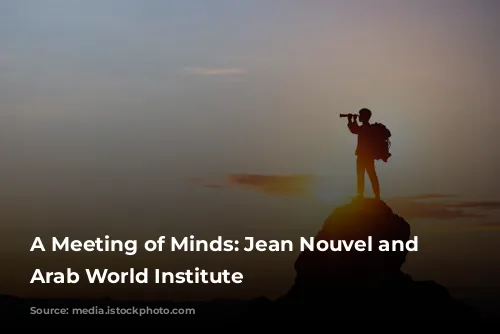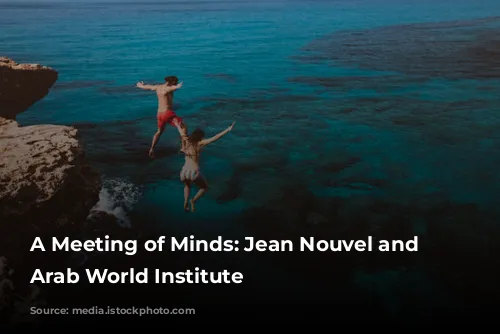The Arab World Institute, one of the first grand projects spearheaded by French President François Mitterrand, is a testament to the extraordinary convergence of a politically charged mission and a daring architect’s vision. This captivating structure, located on the banks of the Seine in Paris, is the brainchild of Jean Nouvel, a designer known for his penchant for bold, experimental designs, often infused with a touch of the theatrical.
A Nightclub-Inspired Architect
Whispers among architectural circles tell of a young Jean Nouvel, a regular at Parisian discotheques. The allure of the dance floor, the air thick with mystery and possibility, the interplay of darkness and light – these, according to the rumors, fueled the architect’s creative spirit. This fascination with the dramatic and the unconventional is palpable in Nouvel’s work, which often exudes a captivating, almost mystical aura. His iconic designs, like the multi-colored, mirrored Torre Agbar in Barcelona and the sleek, black 53 W. 53rd St. in Manhattan, carry a sense of intrigue, reminiscent of the glamorous, underground clubs of the 1960s and 1970s. Even Nouvel’s more commercial projects, like the Sofitel hotel in Vienna, bear this signature style. Here, the guestroom windows feature heavy, hand-operated shutters that transform the space into darkness when closed and bathe the rooms in sunlight when open. This intricate interplay of light and shadow foreshadows Nouvel’s masterstroke: the Arab World Institute.
A Bold Statement on the Seine
The Arab World Institute, completed in 1987, represents a significant milestone not only in Nouvel’s career but in the evolution of French architecture. This ambitious project embodies a unique blend of the avant-garde and the classical, a legacy Nouvel inherited from his mentors, Claude Parent and Paul Virilio, prominent figures in late-modernism. Nouvel, however, took this influence a step further, injecting his signature flair for visual spectacle, transforming his first major solo project into a watershed moment in architectural innovation.
The decision to entrust this project to a relatively inexperienced architect with a flair for the unconventional was audacious, particularly given the institute’s sensitive subject matter. The Arab World Institute was envisioned as a celebration of the rich cultural heritage of the Arab world, a bold move considering France’s colonial past and the complex geopolitical realities of the time. The institute’s location on the edge of the Seine, in close proximity to the rigidly structured Jussieu university campus, only amplified the daring of the choice: the building’s presence was undeniable.
A Building With Two Faces
Nouvel’s genius lies in his ability to create a building with two distinct personalities. From the river’s edge, the institute presents a sleek, glassy facade, seamlessly blending with the surrounding cityscape. However, from the other side, it transforms into a solitary tower block, a stark contrast to its neighboring structure. The building’s most distinctive feature is its unique fenestration system. Over 200 south-facing windows feature lens-like mechanisms, each with a central star-shaped aperture and surrounding smaller satellites. These photo-sensitive irises respond to the intensity of the sun, automatically adjusting to minimize heat gain while allowing filtered natural light to fill the interior spaces. This ingenious design not only celebrates the traditional forms of Arab architecture but also acts as a powerful metaphor: a wall of cameras gazing out at the city, acknowledging the complex cultural dynamics at play.
A Legacy of Innovation
The Arab World Institute is a landmark achievement, showcasing Nouvel’s ability to marry his love of visual spectacle with profound meaning. This project propelled him to the forefront of the architectural world, ushering in a new era of bold, experimental design that continues to inspire and challenge the boundaries of contemporary architecture. The institute stands as a symbol of cultural exchange and a testament to the power of architectural innovation to bridge cultural divides and create lasting legacies.














